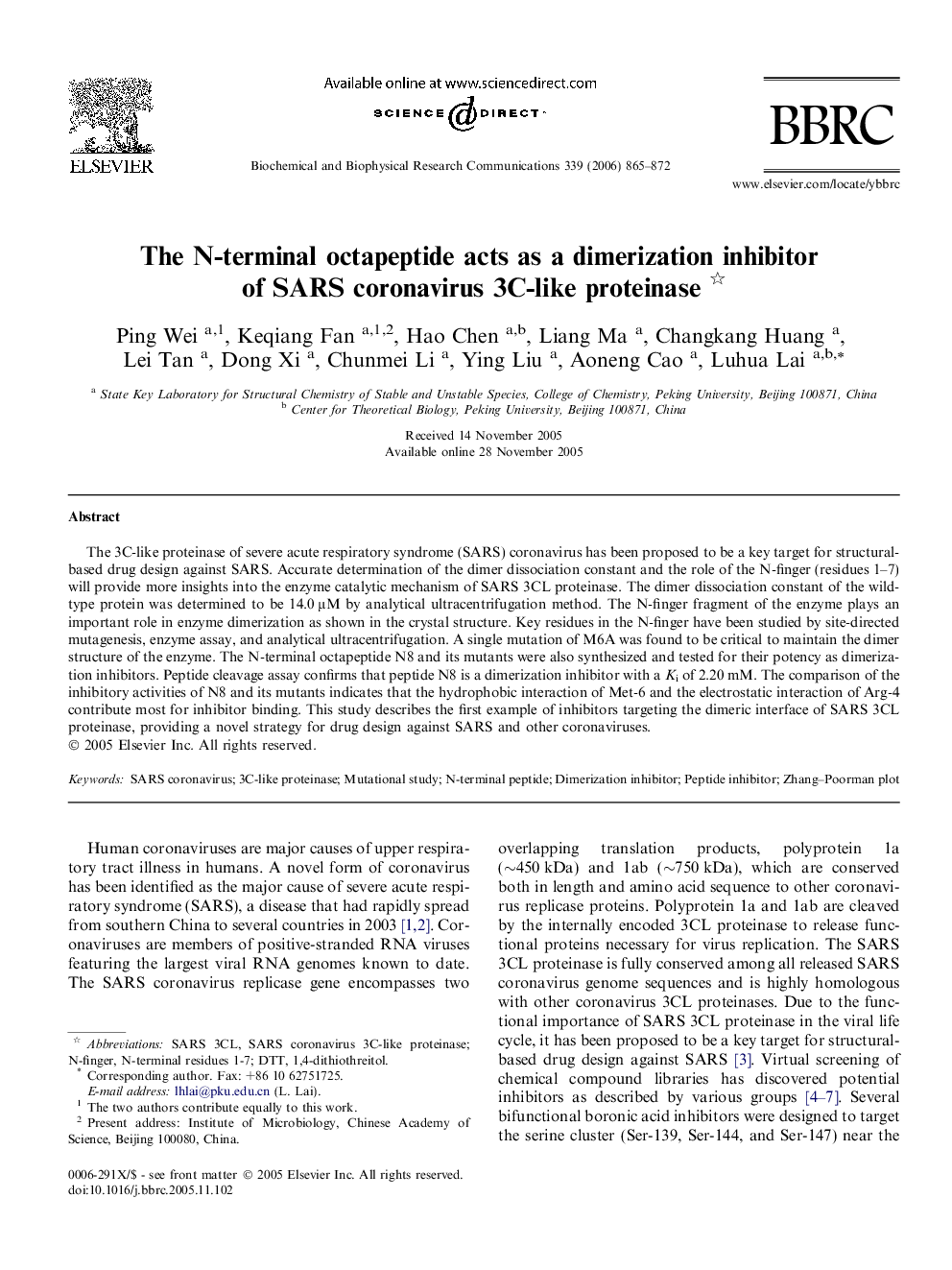| Article ID | Journal | Published Year | Pages | File Type |
|---|---|---|---|---|
| 1941302 | Biochemical and Biophysical Research Communications | 2006 | 8 Pages |
The 3C-like proteinase of severe acute respiratory syndrome (SARS) coronavirus has been proposed to be a key target for structural-based drug design against SARS. Accurate determination of the dimer dissociation constant and the role of the N-finger (residues 1–7) will provide more insights into the enzyme catalytic mechanism of SARS 3CL proteinase. The dimer dissociation constant of the wild-type protein was determined to be 14.0 μM by analytical ultracentrifugation method. The N-finger fragment of the enzyme plays an important role in enzyme dimerization as shown in the crystal structure. Key residues in the N-finger have been studied by site-directed mutagenesis, enzyme assay, and analytical ultracentrifugation. A single mutation of M6A was found to be critical to maintain the dimer structure of the enzyme. The N-terminal octapeptide N8 and its mutants were also synthesized and tested for their potency as dimerization inhibitors. Peptide cleavage assay confirms that peptide N8 is a dimerization inhibitor with a Ki of 2.20 mM. The comparison of the inhibitory activities of N8 and its mutants indicates that the hydrophobic interaction of Met-6 and the electrostatic interaction of Arg-4 contribute most for inhibitor binding. This study describes the first example of inhibitors targeting the dimeric interface of SARS 3CL proteinase, providing a novel strategy for drug design against SARS and other coronaviruses.
